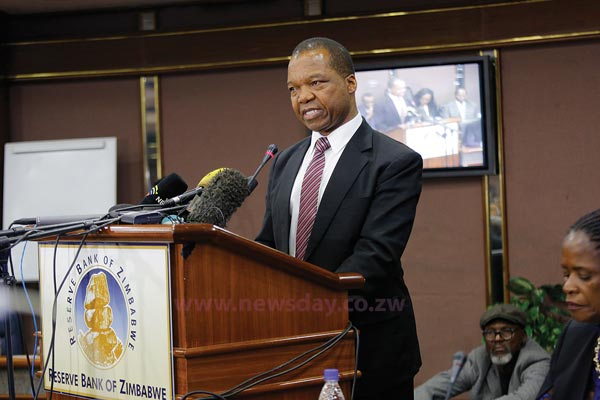
IN a piece titled RBZ rules out dollarisation published by our sister paper, Zimbabwe Independent, on Friday, central bank governor John Mangudya ruled out dollarisation.
One would think with the Zimdollar weakening, both officially and unofficially, that the authorities would stop burying their heads in the sand and realise the market, indeed, most of the country, has moved on from the Zimbabwe dollar.
We thought with the increase in companies rejecting the local currency, offering sweet discounts for greenback purchases and even government departments implementing pricing regimes using the parallel market forex rate, that the authorities would “snap back to reality.”
We assumed that it would be obvious that the consumers and business do not want a local currency that reminds them of the hyperinflation horrors of 2007–8.
Workers also do not want Zimdollar salaries that can no longer keep up with inflation or compete in a race with price increases.
But, no, the authorities continue to act as if what is happening on the market is fiction, pretending that all is well when clearly that is not the case.
What is strange is that Mangudya himself admitted that their policies work on the formal sector, when it only constitutes about 30% to 40% of the economy.
By that logic, between 60% to 70% of the economy is informal.
- Chamisa under fire over US$120K donation
- Mavhunga puts DeMbare into Chibuku quarterfinals
- Pension funds bet on Cabora Bassa oilfields
- Councils defy govt fire tender directive
Keep Reading
Thus, one would think with the informal sector being the larger economic bloc which overwhelmingly does not want the Zimdollar, that their preference would be heeded.
The refusal of the informal sector to accept the Zimdollar can be seen in how the local currency is increasingly being rejected in favour of the greenback as payment for goods and services.
After all, what makes a currency worthless is hyperinflation, war and laws which inhibit its circulation or use.
Is there hyperinflation? Not anymore, but high inflationary pressure still exists that, if left unchecked, can easily turn into hyperinflation.
Is there any war? No, but the continued abuse and attacks by the government on those who critique it through the security forces has significantly increased political risk, thus scaring away any fresh investment.
Finally, are there laws that prevent the local currency’s circulation and use? Yes.
These are Zimdollar withdrawal limits, forex retention thresholds that leave exporters with huge local currency balances that suppliers reject and policies against higher denominated notes which although inflationary, have better purchasing power.
Based on all of this, the Zimdollar is essentially worthless, which is why it trades at $150,21 officially and as high as $350 on the parallel market against the greenback, up from $108,66 and $200, respectively, at the beginning of the year.
So then, why keep the Zimdollar?











